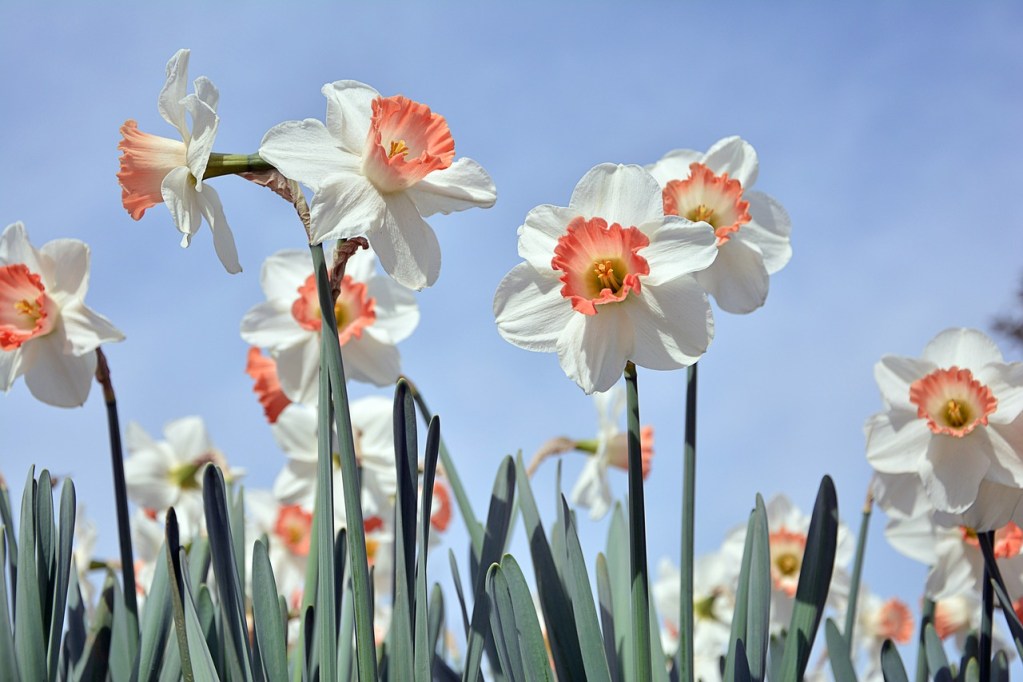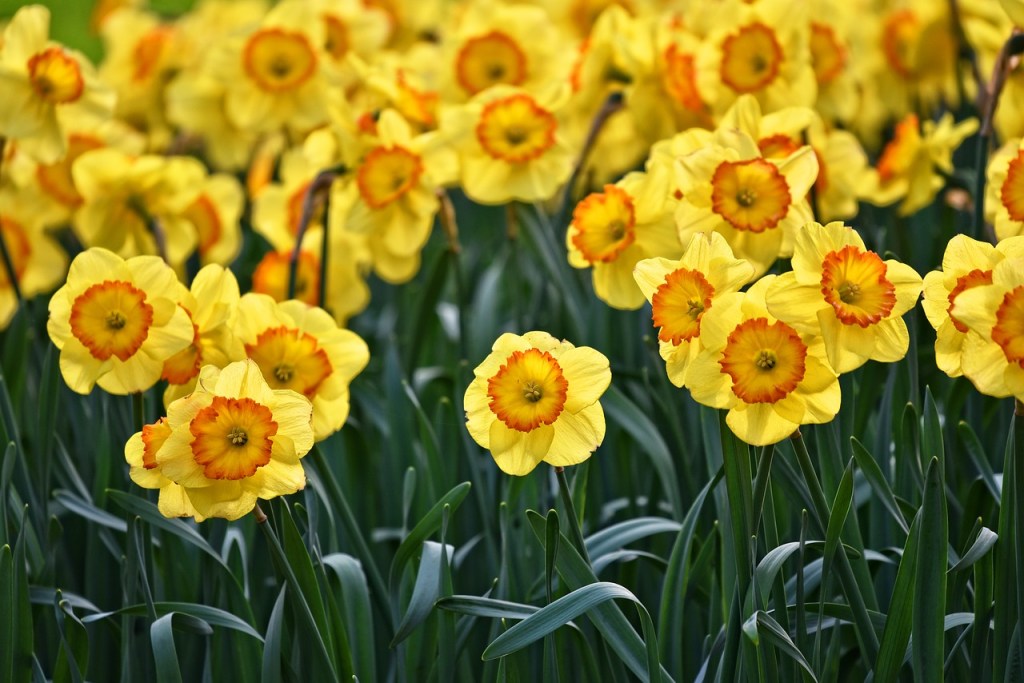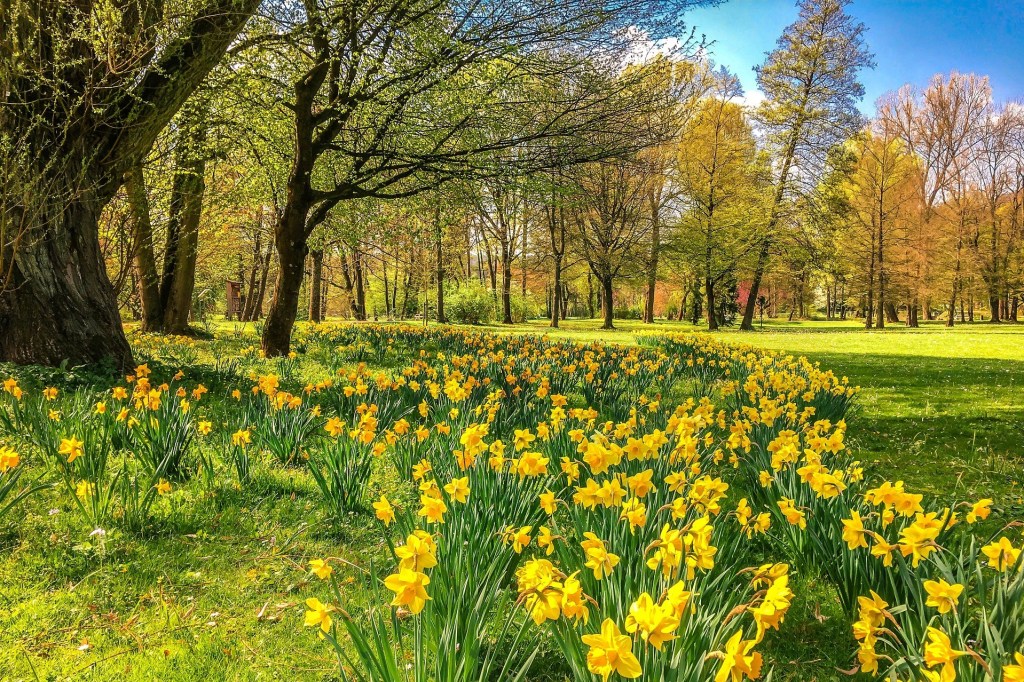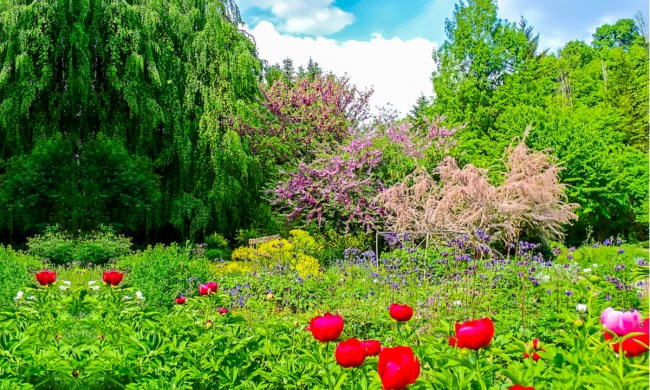Daffodils are some of the earliest blooming flowers, coming up while there is still snow on the ground in some regions. They’re a great way to add color and cheer to your garden, especially before other flowers begin to bloom. You may have some questions about planting and caring for daffodils. When should you plant them? Can they be grown hydroponically, or do they need to be in a traditional garden? What sorts of pests and diseases are daffodils vulnerable to? We have the answers you’re looking for.
What are the best varieties of daffodil?
If you’re looking for a classic, sunshine yellow daffodil, then you might want to choose Dutch Master or Carlton. Carlton has a more elongated trumpet than Dutch Master, but both are a solid yellow. For a smaller, daintier yellow daffodil you could try Hawera or Peeping Tom. Peeping Tom has only one flower per stem, like a standard daffodil, while Hawera grows in clusters of 3 to 4 flowers per stem.
White daffodils are sometimes called narcissus, but, in actuality, daffodils and narcissus are the same plant. If you want a white daffodil, you could plant a classic, like Mount Hood, or a small, cluster-forming flower, like Ice Wings or Thalia.
Some daffodils are multicolored or more unusual colors. Pink Charm, for example, is mostly white with a small pink ring on the end of its trumpet, while Salome has white petals and a pale yellow trumpet. Bridal Crown and Tahiti don’t follow the standard petals and trumpet form of a daffodil, but instead, have layered petals like a carnation. Bell Song is a variety with pale yellow petals and a light rose trumpet.

Planting daffodils
When should you plant daffodils?
Daffodils, like most other spring-blooming bulbs, should be planted during fall. Aim to get your bulbs in the ground two to four weeks before the first freeze of the year. Depending on where you live, this could be anytime between September and November. The bulbs need the cold weather, and subsequent warming, to grow properly. This is why daffodils sometimes struggle to grow in hotter climates. In general, whenever you begin planting your fall vegetable garden is when you should plant daffodils.
How to plant daffodils
Plant your daffodils in full or partial sun, in a place with well-draining soil. Daffodils aren’t heavy feeders, so average quality soil will do just fine. However, they don’t tolerate standing water very well. If your soil is not well-draining, try planting them on a hill or slope, so that water will naturally flow away from the bulbs.
Choose bulbs that are fresh and large for healthy flowers, and try to avoid any dried or damaged bulbs. Plant them with the pointed side facing up. The hole should be two to three times as deep as the bulb is tall, and spaced three to six inches apart from each other. You can grow daffodils hydroponically indoors, in cool, clean water. However, the flowers don’t last as long. You can also start daffodils in water and then transplant them outdoors, but it has a lower success rate than starting them in soil.

Caring for daffodils
Daffodils thankfully need little in the way of care. If you live in a region with harsh winters, then you might want to consider a layer of mulch over the bulbs to keep them warm. Unless your soil is poor then you don’t need to worry about fertilizer, but if you notice subpar performance from your daffodils, then you can add a small amount of balanced fertilizer or compost.
Daffodils only need about an inch of water each week. In drier regions, this means a thorough watering once a week or a light watering every few days. If you live in an area with more regular rainfall, then your daffodil may survive on rain alone.

Pests and diseases
Some small insects such as narcissus flies, mites, and slugs can become a problem. Slugs can be contained through physical barriers, especially textured ones such as strips of gravel or eggshells, while flying insects are more easily controlled through sprays, such as capsaicin or neem oil.
Daffodils can contract several viral and bacterial infections, but there are easy ways to control them. Proper airflow and water drainage can keep your daffodils healthy. Some viral infections are spread by pests, such as the narcissus yellow stripe virus which is spread by aphids. Pest control sprays and encouraging beneficial insects like ladybugs to live in your garden can help keep these at bay.
Fungal and bacterial infections can live in the soil and are often spread by water. Proper soil drainage is one way to help, as well as avoiding getting the leaves wet when you water them. For minor fungal infections, you can use a fungicide, but severe infections are best treated by uprooting and destroying the infected plant to avoid spread.
Daffodils are a cheerful sign that spring is just around the corner, and they aren’t difficult to take care of. If you prefer, you can even grow them indoors, and add a burst of color to your home during winter or early spring. No matter what variety of daffodils you choose, you’ll enjoy these delightful, bright little flowers for years to come.



